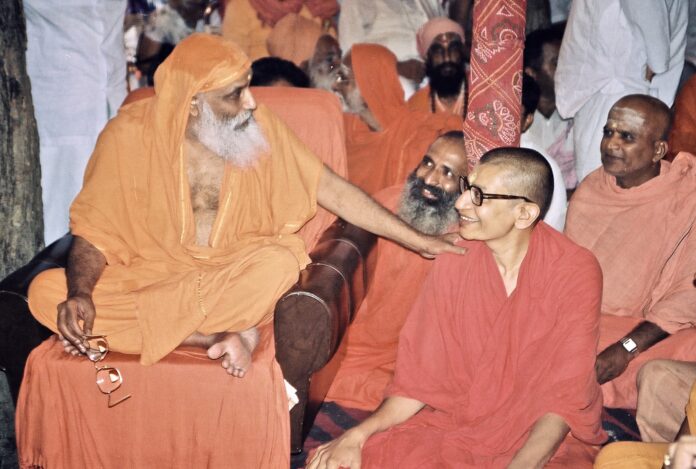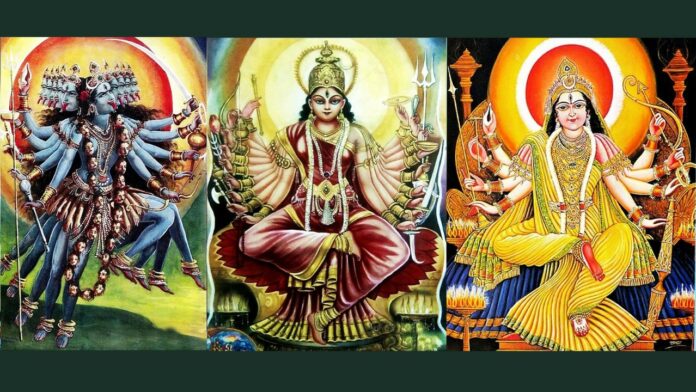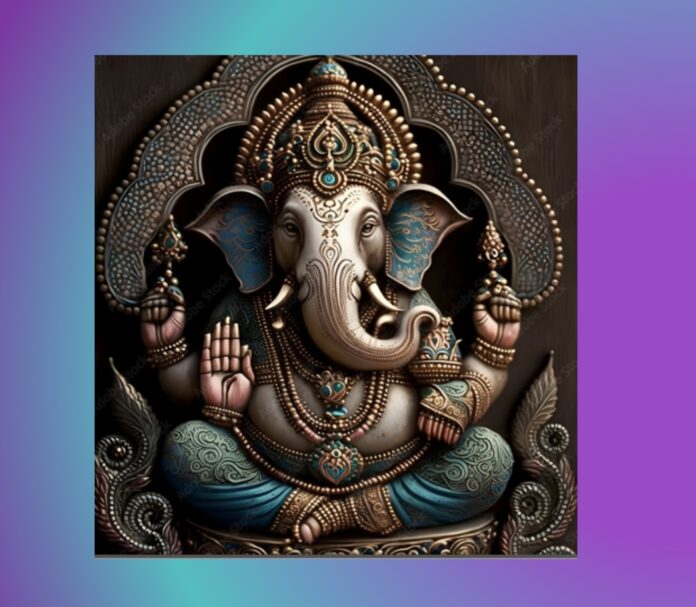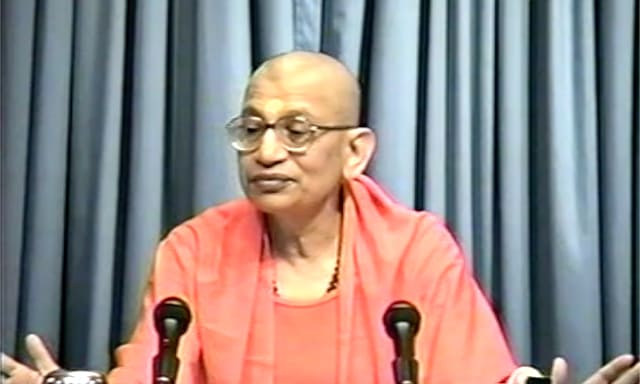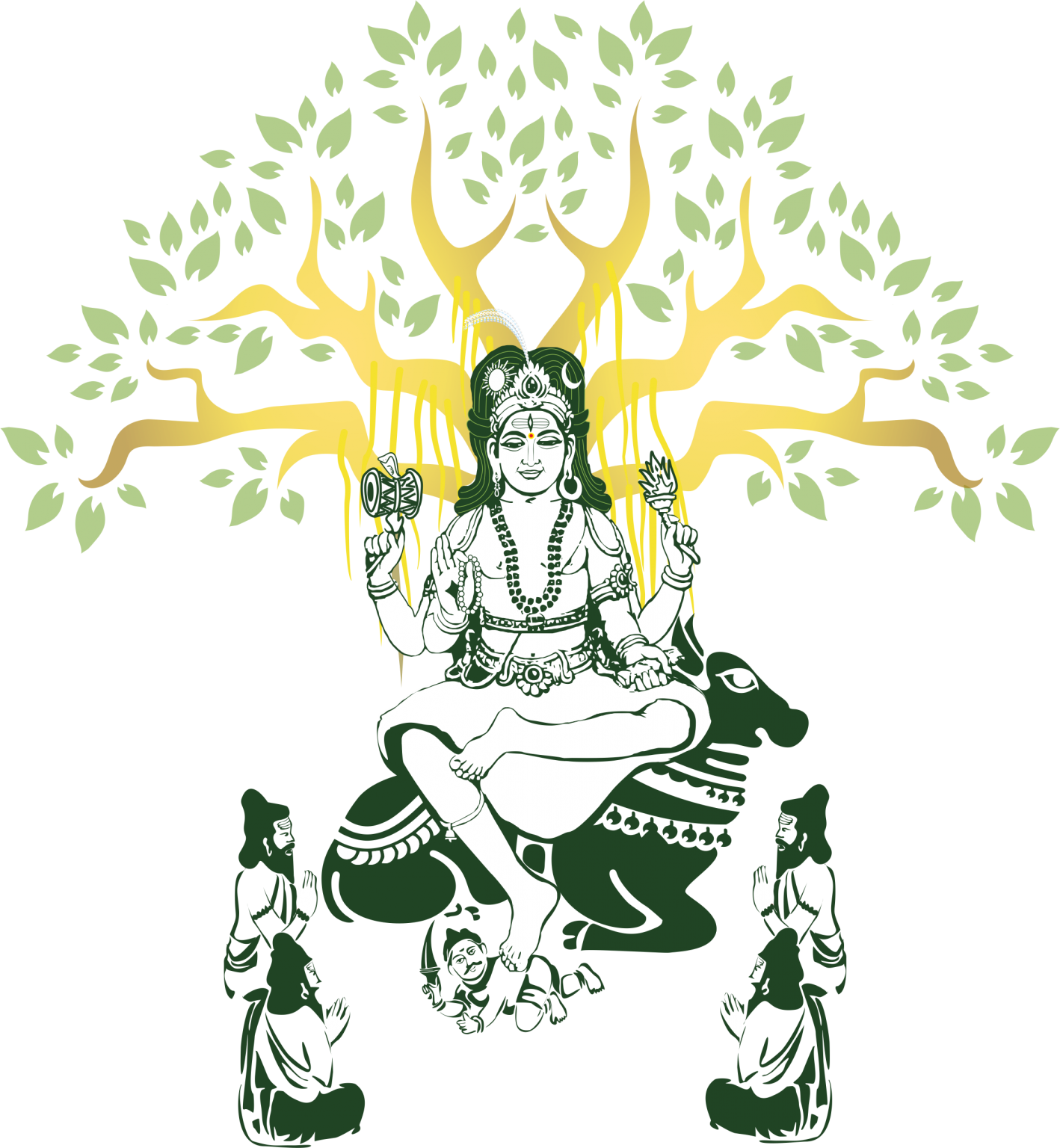Satsang with Swami Viditatmananda Saraswati
What is advaita?
Advaita says that the seeker is the sought. It says that the mokṣa or liberation that I am seeking is really my own self, like the search of the 10th man for himself, in the famous story of The 10th Man. Even though you are of the nature of unsurpassable happiness, you are searching for happiness! This is advaita. A limited one cannot be the nature of limitless happiness. Vedānta tells us that we are limitless. Traditional limitations are those of time, space and object. That you are limitless implies that you are not limited in time, you are not limited in space and that you are not limited in qualities. It means you include all time, the entire space and every object or quality. Therefore, whatever there exists, is you, the Self. This is advaita.
How do we then account for all the duality that we see? I see that you are different from me. How can I be limitless if I am different from you? For me to be limitless means that you really cannot be different from me, otherwise I cannot be limitless. If you are different from me and I am different from you, then I am limited and you are also limited. So what do I make of the differences that I see? It means that these differences cannot be real. It means all these differences; all of this duality and all of this creation cannot be real! It is mithyā, an appearance or projection. Thus, starting with the one idea that we are limitless, we can arrive at all of these conclusions! That is why we require Vedānta as a pramāõa, a means of knowledge. Vedānta alone can tell us that we are limitless because there is no way for us to discover this fact ourselves! We have taken for granted that we are limited! Vedānta says we are limitless, which implies that our sense of limitation and our sense of differences must be false. This is advaita.
How do we explain the creation, then? What is creation? Creation is nothing but a superimposition. For you to be limitless, you must be one and non-dual. Therefore, the truth must be one and non-dual. For the truth to be non-dual it must be both the material and the efficient cause of this creation! That is, it must be the creator and the creation too! That is why God is both the material as well as the efficient cause of this creation. He is the creator as well as the creation. This is advaita.
All traditions accept God as the creator of the world. Most traditions, however, view God as different from the creation! He has created this world and is said to be in the heavens or some place. For creation, you require knowledge and therefore, the creator must be all knowing or omniscient. For creation, you also require the power or the skill to create, so the creator must be all-powerful or omnipotent. Therefore God, the creator of the universe, is omniscient and omnipotent. “Obviously I cannot be that! I know that I am limited in power, limited in knowledge and limited in every way! God has to be different from me!” When God is looked upon as merely the efficient cause and as the creator of the universe, which is how most traditions or theologians understand Him, He has to be different from me! If you are a devotee of Lord Krishna, going to Gokula and being in the presence of Lord Krishna is mokṣa. That is dvaita (duality).
The Upanishads say that God is not just the creator, but also the creation. If God created the world, where did he get the material with which he created this world? If he got the material from somewhere else, then, must not whoever provided him the material be another God? That cannot be and therefore the material also must come from him. He is not only the efficient cause but he is the material cause as well. Viewed thus, the whole universe becomes the body of God. Therefore, the whole creation is not apart from God. It is a manifestation of God. You are a part of the creation and therefore, you are also a part of God. Therefore, you are a part and God is the whole. This is viśistādvaita.
What we call creation is in truth, not real. Therefore God is not the creator or the cause in the primary sense. In fact, He transcends the very idea of cause and effect. Thus when you recognize that God transcends both the efficient and the material cause, and the causality, you see then, that he is your own Self. Then there is non-duality. This is Advaita.
This is how the philosophies of dvaita, viśistādvaita and advaita are explained. Swami Vivekanandaji used to say that it is going from one truth to another truth, meaning that it is a progression from a lower truth to a higher truth. That God is different from me has some truth, as long as I look upon myself as a limited individual. There is a statement that is attributed to Hanuman when he says to Lord Rama:
deha budhyā tu dāsoham jīva budhyā tu damshakahah ātma budhyā thvame vāham
When I am identified with my body, then I am your servant. When I look upon myself as you, as a conscious being, then I am part of you. When I look upon myself as ātmā, then I am not separate from you.
Deha budhyā tu dāsoham. ‘When I am identified with my body, then I am your servant. You are my master and I am your servant. You are you and I am I.’
Jīva budhyā tu damshakahah. ‘When I look upon myself as you, as a conscious being, then I am a part of you. Because you are the totality of consciousness, I am a small consciousness. I am a part of you.’
Ātma budhyā thvame vāham. ‘When I look upon myself as ātmā, the Self, then I am not separate from you. I am you.’ As long as there is a strong identification with the body, God is separate from us.
Lord Krishna says in the 12th chapter of the Bhagavad Gītā that it is very difficult for those who are devoted to avyakta to arrive at the truth, when they are identified with the body. A strong body-identification creates a strong sense of limitation and an acceptance of the experiential duality.
The Vedāntins worship God not to perpetuate duality, but to gradually eliminate the perception of this apparent duality. In our prayers to the Lord, we pray for the removal of the duality, which we feel.
